I am trying to implement a clamped cubic spline with a zero slope (flat extrapolation) at the boundary knots, but I am unable to obtain the desired results.
For instance setting:
x = [3 4 7 9];
y = [2 1 2 0.5];
I can use the CSAPE function to obtain the piecewise polynomial
pp = csape(x,y,'variational');
Next, evaluating the pp in the range [0-10] yields,
xx = 0:0.1:10;
yy =ppval(pp,xx);
plot(xx,yy)
However, this method do not achieve a flat extrapolation outside the [3-9] range (i.e for x<3 all values for y should be 2, and for x>9 all values for y should be 0.5)
Is there any way to achieve the desired result?
Edit: Continuity at the boundary knot should be preserved



